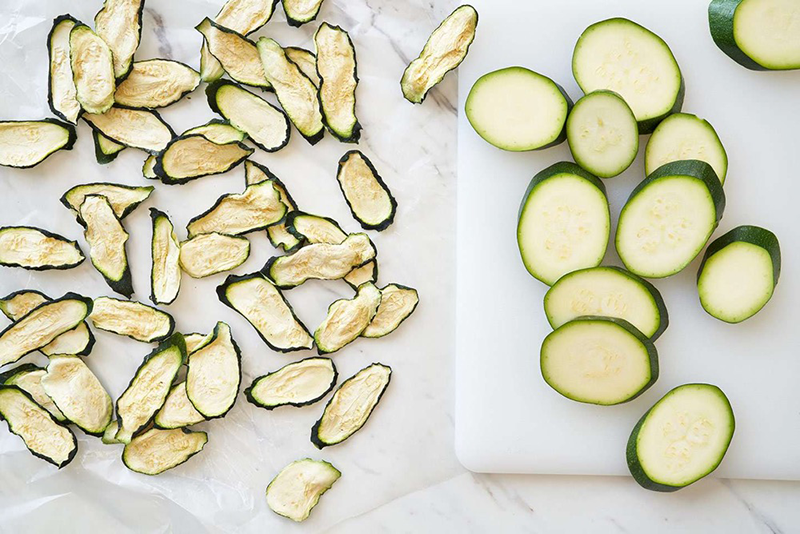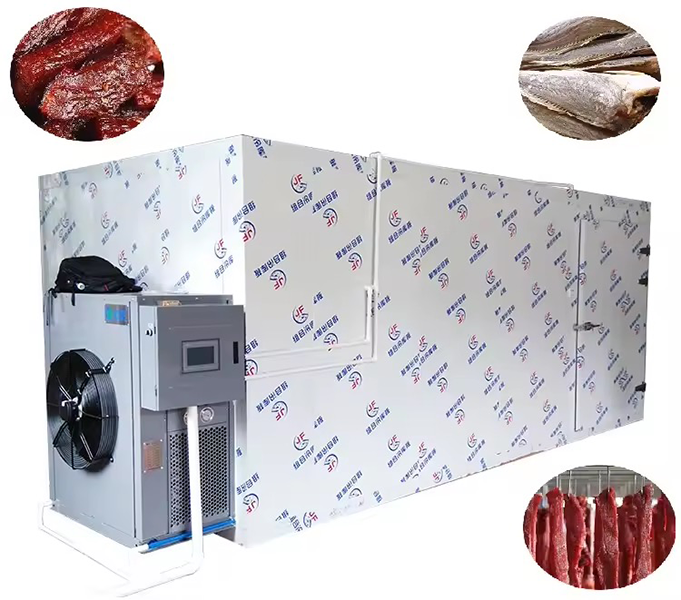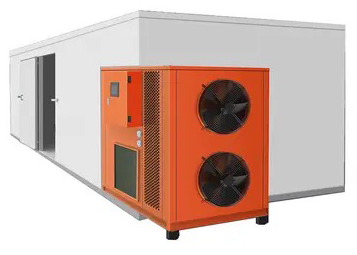
Content Menu
● Understanding the Technology
● Performance Comparison
● Energy Efficiency
● Nutrient Preservation
● Drying Time Considerations
● Cost Analysis
● Application Suitability
● Environmental Impact
● Maintenance Requirements
● User Experience
● Conclusion
● FAQ
>> 1. What is the main difference between condenser and heat pump dryers?
>> 2. Are heat pump dryers worth the investment?
>> 3. Can I use a heat pump dryer for all types of food?
>> 4. How do I maintain my dryer?
>> 5. What are some common applications for food drying?
● Citations:
The drying of food products is an essential process in the food industry, ensuring that moisture is removed to prevent spoilage and extend shelf life. Among the various technologies available, condenser dryers and heat pump dryers are two popular options. This article will explore the differences between these two types of dryers, their performance in food drying applications, and ultimately help you decide which type might be better for your specific needs.

Understanding the Technology
Condenser dryers work by heating air and circulating it through a drum containing the food items. The hot air absorbs moisture from the food, which is then condensed into water and collected in a tank or drained away. This method is relatively straightforward and often results in quicker drying times compared to heat pump technology.
- Advantages of Condenser Dryers:
- Faster drying cycles due to higher operating temperatures.
- Generally lower initial purchase costs.
- Easier installation as they do not require external venting.
- Disadvantages of Condenser Dryers:
- Higher energy consumption due to the need for heating air to high temperatures.
- Potential risk of damaging sensitive food items due to excessive heat.
Heat pump dryers utilize a more complex system that involves recycling heat. They extract heat from the ambient air, compress it to increase its temperature, and then use this hot air to dry the food. Moist air is removed from the drum and passed through a heat exchanger where moisture is condensed and collected.
- Advantages of Heat Pump Dryers:
- Significantly lower energy consumption—up to 50% less than condenser dryers.
- Gentler on food items, preserving nutrients and flavors.
- Ability to maintain precise temperature control, which is crucial for sensitive products.
- Disadvantages of Heat Pump Dryers:
- Longer drying times compared to condenser dryers.
- Higher initial investment costs.
Performance Comparison
To determine which dryer offers better performance for food drying, we need to consider several factors:
| Factor | Condenser Dryer | Heat Pump Dryer |
| Energy Efficiency | Less efficient; higher energy costs | Highly efficient; lower energy costs |
| Drying Temperature | High temperatures (risk of damage) | Lower temperatures (gentler process) |
| Drying Time | Faster drying cycles | Longer drying cycles |
| Initial Cost | Generally lower | Generally higher |
| Maintenance | Simple maintenance | More complex maintenance |
Energy Efficiency
Energy efficiency is a critical consideration in today's environmentally conscious market. Heat pump dryers stand out due to their ability to recycle heat, making them much more energy-efficient than condenser dryers. For instance, while a typical condenser dryer may consume around 561 kWh annually, a heat pump dryer can operate on as little as 235 kWh per year. This significant difference can lead not only to cost savings but also reduced environmental impact.

Nutrient Preservation
When it comes to food drying, maintaining the nutritional quality of the product is paramount. Heat pump dryers excel in this area because they operate at lower temperatures, which helps preserve vitamins and minerals that might otherwise be lost during high-temperature drying processes typical of condenser dryers. This makes heat pump technology particularly suitable for drying fruits, vegetables, herbs, and other nutrient-sensitive items.
Drying Time Considerations
Although heat pump dryers are more energy-efficient and gentler on food products, they do require longer drying times. This can be a disadvantage in commercial settings where speed is essential. For example, while a condenser dryer might complete a cycle in about 145 minutes, a heat pump dryer could take up to 178 minutes or more. Businesses must weigh the importance of speed against energy savings and product quality when choosing between these two technologies.
Cost Analysis
The initial cost of equipment can also influence decision-making. While heat pump dryers may have a higher upfront cost due to their advanced technology, they offer long-term savings through reduced energy consumption. Businesses should consider their budget constraints alongside their operational needs when making this choice.
Application Suitability
Different types of foods require different drying methods based on their moisture content and sensitivity to heat. Here are some common applications for both types of dryers:
- Fruits: Heat pump dryers are ideal for fruits like apples, bananas, and berries as they retain flavor and nutrients better at lower temperatures.
- Vegetables: For vegetables such as tomatoes or peppers, both dryer types can work; however, heat pump technology may yield superior results in terms of quality.
- Herbs: Delicate herbs like basil or parsley benefit from the gentle drying process provided by heat pump dryers.
- Meats: Condenser dryers can be effective for jerky production due to faster drying times; however, care must be taken to avoid overheating.
- Seafood: Similar to meats, seafood can be dried effectively with both methods but may require careful monitoring with condenser dryers.
Environmental Impact
As businesses increasingly focus on sustainability, the environmental impact of equipment becomes a crucial consideration. Heat pump dryers not only consume less energy but also produce fewer greenhouse gas emissions over their lifespan compared to traditional condenser models. By choosing energy-efficient equipment like heat pump dryers, companies can enhance their sustainability profile while potentially qualifying for government incentives aimed at reducing carbon footprints.
Maintenance Requirements
Maintaining your dryer is essential for ensuring its longevity and optimal performance.
- Condenser Dryers: Typically require less maintenance; users should clean filters regularly and check for any blockages in drainage systems.
- Heat Pump Dryers: May require more frequent checks due to their complex systems. Users should ensure that the heat exchanger is clean and free from debris to maintain efficiency.
Regular maintenance not only extends the life of your equipment but also ensures that your food products are dried efficiently without contamination or spoilage.
User Experience
User experience can vary significantly between these two types of dryers.
- Condenser Dryers: Often favored for their simplicity and speed; users appreciate quick turnaround times but may find themselves needing to monitor temperature closely.
- Heat Pump Dryers: While they may take longer to dry products, users often report satisfaction with the quality of dried goods produced. The ability to set specific temperature controls allows for customization based on product requirements.
Conclusion
In summary, both condenser and heat pump dryers have their unique advantages and disadvantages when it comes to food drying applications.
- If speed and lower initial costs are your primary concerns, a condenser dryer may be suitable for your needs.
- However, if you prioritize energy efficiency, nutrient preservation, and gentler drying processes, investing in a heat pump dryer could provide greater long-term benefits.
Ultimately, the choice between these two types of dryers will depend on your specific requirements regarding product type, volume of production, budget constraints, and environmental considerations.

FAQ
1. What is the main difference between condenser and heat pump dryers?
Condenser dryers use high temperatures to dry food quickly but consume more energy and can damage delicate items. Heat pump dryers operate at lower temperatures using recycled heat for more gentle drying but take longer.
2. Are heat pump dryers worth the investment?
Yes! While they have a higher initial cost, they save significantly on energy bills over time and preserve food quality better than condenser dryers.
3. Can I use a heat pump dryer for all types of food?
Yes! Heat pump dryers are versatile and can handle various foods including fruits, vegetables, herbs, meats, and seafood without compromising quality.
4. How do I maintain my dryer?
Regularly clean filters and ensure proper airflow around the unit for both types of dryers. Heat pump dryers may require more technical maintenance due to their complexity.
5. What are some common applications for food drying?
Food drying is commonly used for preserving fruits (like apples and bananas), vegetables (like tomatoes), herbs (like basil), meats (like jerky), and even seafood (like fish).
Citations:
[1] https://www.aeg.co.uk/support/support-articles/laundry/dryers/how-long-does-a-full-load-dry-to-dry-take-in-a-dryer-heatpump-vs-condenser/
[2] https://docs.lib.purdue.edu/cgi/viewcontent.cgi?article=3221&context=iracc
[3] https://www.dryeratech.com/how-do-condenser-dryers-compare-to-heat-pump-dryers.html
[4] https://vn.dryers-dehydrators.com/info/advantage-of-food-heat-pump-dryer-81163580.html
[5] https://www.ike.cn/video.html
[6] https://www.youtube.com/watch?v=FKSgyjk_e3c
[7] https://www.youtube.com/watch?v=DeN-h6opueM
[8] https://www.siemens-home.bsh-group.com.hk/en/appliances/laundrycare/tumble-dryers/comparison-heat-pump-dryer-condenser-dryer
[9] https://www.youtube.com/watch?v=rR2G5UO-5Ms
[10] https://extension.illinois.edu/videos/food-preservation-how-dry-food











